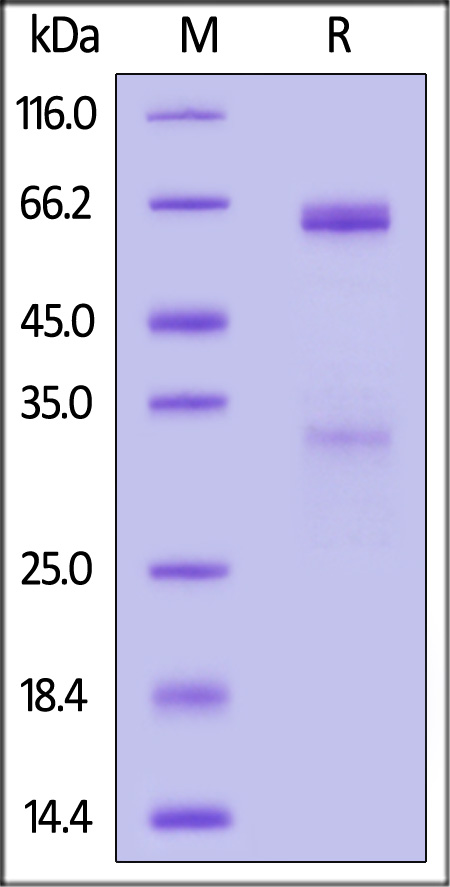Hepatic stellate cells control liver zonation, size and functions via R-spondin 3Sugimoto, Saito, Wang
et alNature (2025)
Abstract: Hepatic stellate cells (HSCs) have a central pathogenetic role in the development of liver fibrosis. However, their fibrosis-independent and homeostatic functions remain poorly understood1-5. Here we demonstrate that genetic depletion of HSCs changes WNT activity and zonation of hepatocytes, leading to marked alterations in liver regeneration, cytochrome P450 metabolism and injury. We identify R-spondin 3 (RSPO3), an HSC-enriched modulator of WNT signalling, as responsible for these hepatocyte-regulatory effects of HSCs. HSC-selective deletion of Rspo3 phenocopies the effects of HSC depletion on hepatocyte gene expression, zonation, liver size, regeneration and cytochrome P450-mediated detoxification, and exacerbates alcohol-associated and metabolic dysfunction-associated steatotic liver disease. RSPO3 expression decreases with HSC activation and is inversely associated with outcomes in patients with alcohol-associated and metabolic dysfunction-associated steatotic liver disease. These protective and hepatocyte-regulating functions of HSCs via RSPO3 resemble the R-spondin-expressing stromal niche in other organs and should be integrated into current therapeutic concepts.© 2025. The Author(s).
Identification of potential druggable targets for endometriosis through Mendelian randomization analysisChen, Wei, Li
et alFront Endocrinol (Lausanne) (2024) 15, 1371498
Abstract: Endometriosis (EM) is a widely recognized disorder in gynecological endocrinology. Although hormonal therapies are frequently employed for EM, their side effects and outcome limitations underscore the need to explore the genetic basis and potential drug targets for developing innovative therapeutic approaches. This study aimed to identify both cerebrospinal fluid (CSF) and plasma protein markers as promising therapeutic targets for EM.We utilized Mendelian randomization (MR) analysis to explore potential disease-causing proteins, utilizing genetic datasets from genome-wide association studies (GWAS) and protein quantitative trait loci (pQTL) analyses. We applied a range of validation techniques, including reverse causality detection, phenotype scanning, Bayesian co-localization (BC) analysis, and external validations to substantiate our findings. Additionally, we conducted a protein-protein interaction (PPI) network as well as functional enrichment analyses to unveil potential associations among target proteins.MR analysis revealed that a decrease of one standard deviation (SD) in plasma R-Spondin 3 (RSPO3) level had a protective effect on EM (OR = 1.0029; 95% confidence interval (95% CI): 1.0015-1.0043; P = 3.2567e-05; Bonferroni P < 5.63 × 10-5). BC analysis showed that RSPO3 shared the same genetic variant with EM (coloc.abf-PPH4 = 0.874). External validation further supported this causal association. Galectin-3 (LGALS3; OR = 0.9906; 95% CI: 0.9835-0.9977; P = 0.0101), carboxypeptidase E (CPE; OR = 1.0147; 95% CI: 1.0009-1.0287; P = 0.0366), and alpha-(1,3)-fucosyltransferase 5 (FUT5; OR = 1.0053; 95% CI: 1.0013-1.0093; P = 0.002) were detected as potential targets for EM in CSF. PPI analysis showed that fibronectin (FN1) had the highest combined score. Furthermore, several EM-linked proteins were involved in the glycan degradation pathway.In conclusion, this comprehensive study offers valuable insights into potential drug targets for EM, with RSPO3 emerging as a promising candidate. Additionally, mechanistic roles of FN1, glycan degradation pathway, LGALS3, CPE, and FUT5 in EM warrant further investigation.Copyright © 2025 Chen, Wei, Li, Zhou, Liu and Ou-Yang.
Expanding the genetic landscape of endometriosis: Integrative -omics analyses uncover key pathways from a multi-ancestry study of over 900,000 womenGuare, Das, Caruth
et almedRxiv (2024)
Abstract: We report the findings of a genome-wide association study (GWAS) meta-analysis of endometriosis consisting of a large portion (31%) of non-European samples across 14 biobanks worldwide as part of the Global Biobank Meta-Analysis Initiative (GBMI). We identified 45 significant loci using a wide phenotype definition, seven of which are previously unreported and detected first genome-wide significant locus ( POLR2M ) among only African-ancestry. Our narrow phenotypes and surgically confirmed case definitions for endometriosis analyses replicated the known loci near CDC42 , SKAP1 , and GREB1 . Through this large ancestry stratified analyses, we document heritability estimates in range of 10-12% for all ancestral groups. Thirty-eight loci had at least one variant in the credible set after fine-mapping. An imputed transcriptome-wide association study (TWAS) identified 11 associated genes (two previously unreported), while the proteome-wide association study (PWAS) suggests significant association of R-spondin 3 (RSPO3) with wide endometriosis, which plays a crucial role in modulating the Wnt signaling pathway. Our diverse, comprehensive GWAS, coupled with integrative -omics analysis, identifies critical roles of immunopathogenesis, Wnt signaling, and balance between proliferation, differentiation, and migration of endometrial cells as hallmarks for endometriosis. These interconnected pathways and risk factors underscore a complex, multi-faceted etiology of endometriosis, suggesting multiple targets for precise and effective therapeutic interventions.
Glial cell line derived neurotrophic factor (GDNF) induces mucosal healing via intestinal stem cell niche activationHörner, Burkard, Kelm
et alCell Prolif (2025) 58 (2), e13758
Abstract: Mucosal healing is critical to maintain and restore intestinal homeostasis in inflammation. Previous data provide evidence that glial cell line-derived neurotrophic factor (GDNF) restores epithelial integrity by largely undefined mechanisms. Here, we assessed the role of GDNF for mucosal healing. In dextran sodium sulphate (DSS)-induced colitis in mice application of GDNF enhanced recovery as revealed by reduced disease activity index and histological inflammation scores. In biopsy-based wounding experiments GDNF application in mice improved healing of the intestinal mucosa. GDNF-induced epithelial recovery was also evident in wound assays from intestinal organoids and Caco2 cells. These observations were accompanied by an increased number of Ki67-positive cells in vivo after GDNF treatment, which were present along elongated proliferative areas within the crypts. In addition, the intestinal stem cell marker and R-spondin receptor LGR5 was significantly upregulated following GDNF treatment in all experimental models. The effects of GDNF on cell proliferation, LGR5 and Ki67 upregulation were blocked using the RET-specific inhibitor BLU-667. Downstream of RET-phosphorylation, activation of Src kinase was involved to mediate GDNF effects. GDNF promotes intestinal wound healing by promoting cell proliferation. This is mediated by RET-dependent activation of Src kinase with consecutive LGR5 upregulation, indicating activation of the stem cell niche.© 2024 The Author(s). Cell Proliferation published by Beijing Institute for Stem Cell and Regenerative Medicine and John Wiley & Sons Ltd.


























































 膜杰作
膜杰作 Star Staining
Star Staining

















